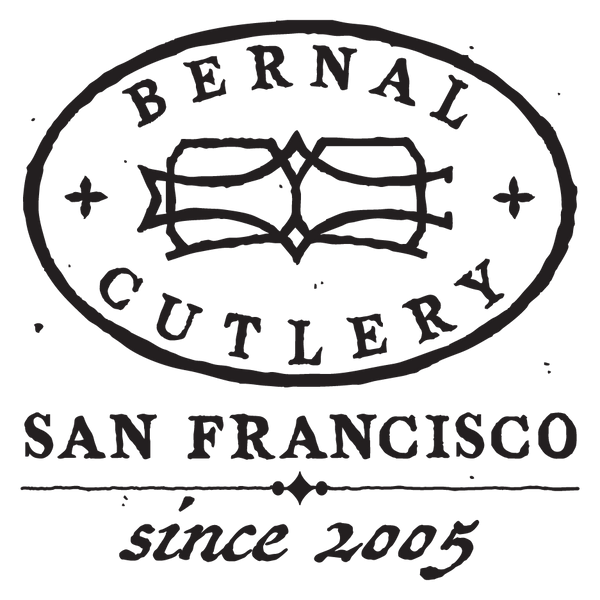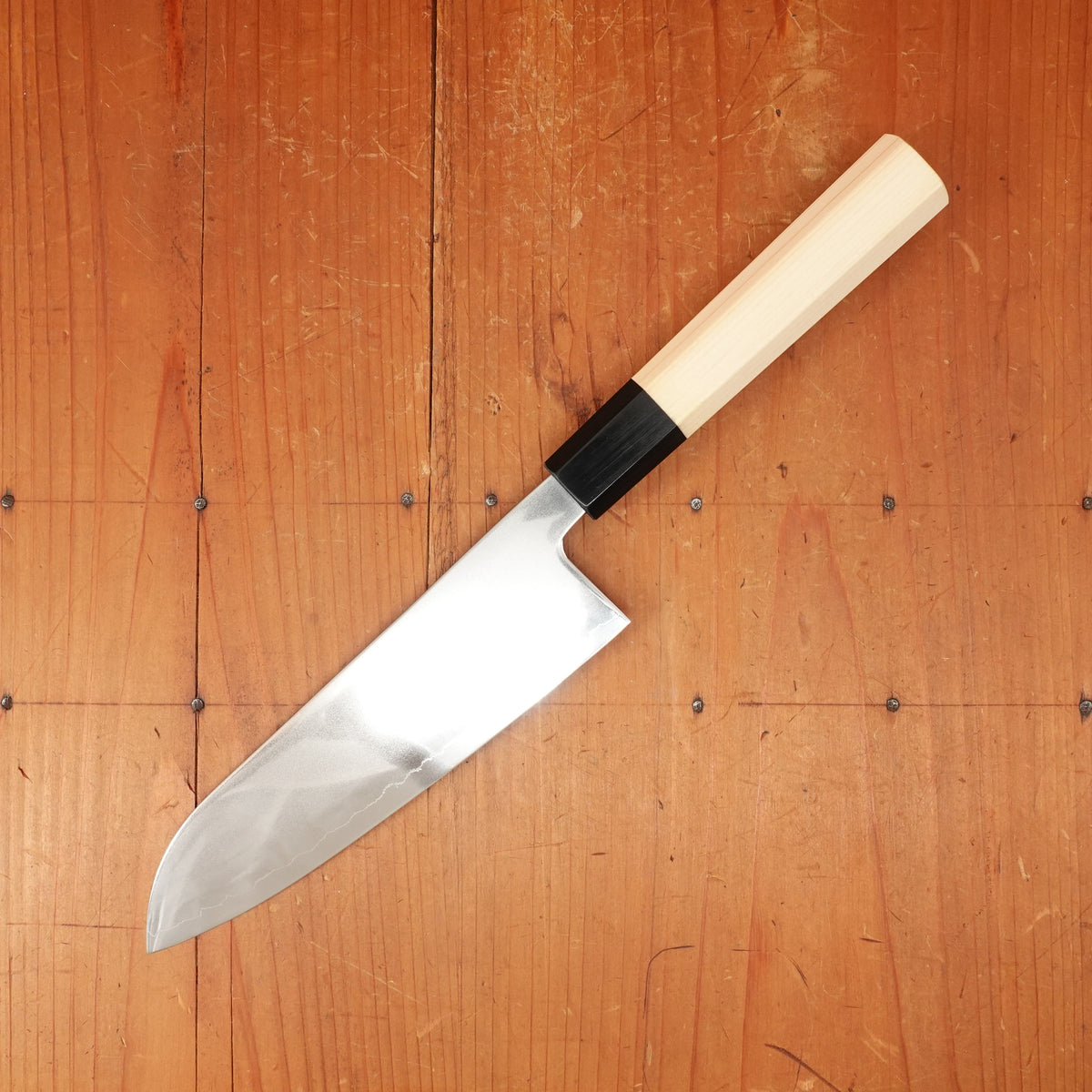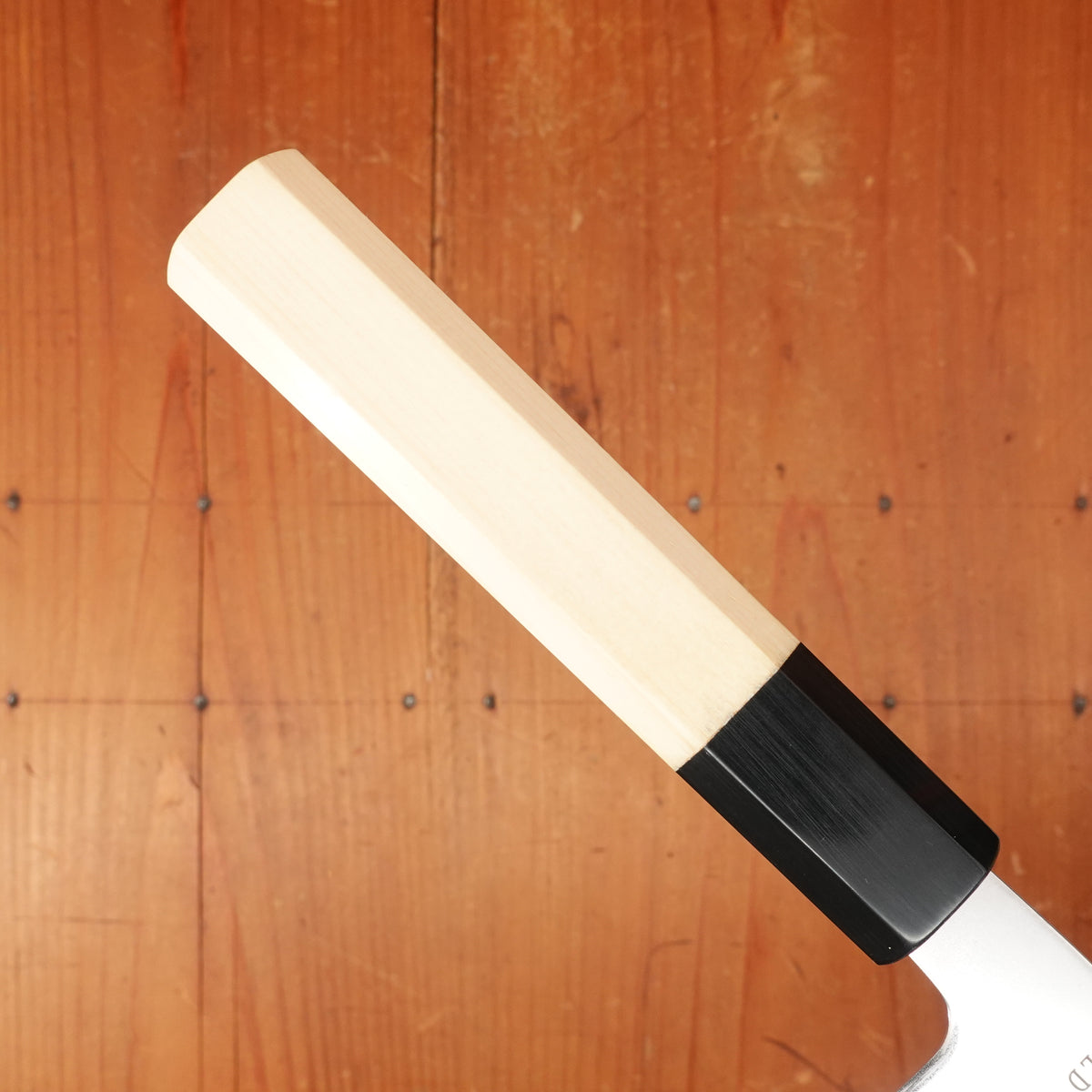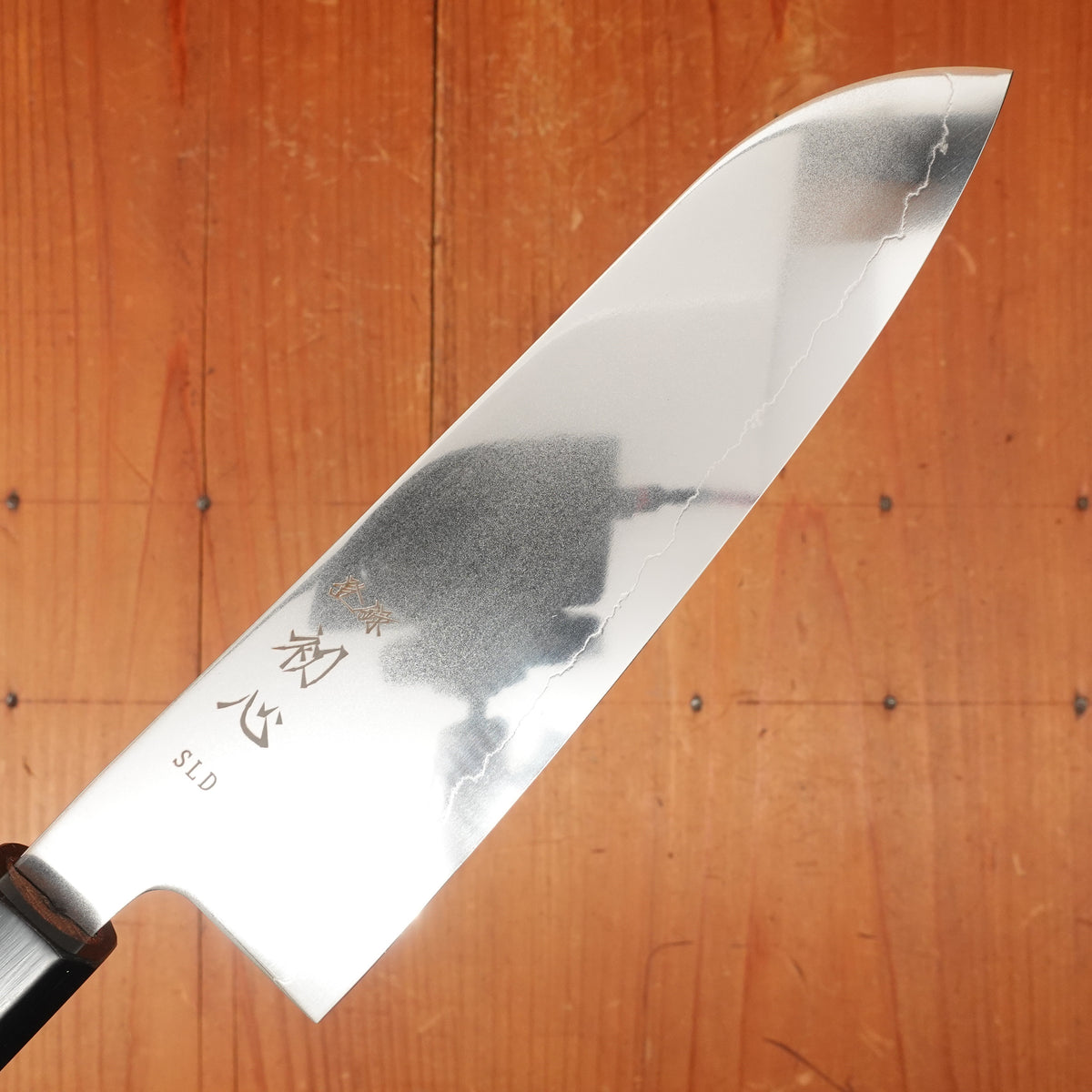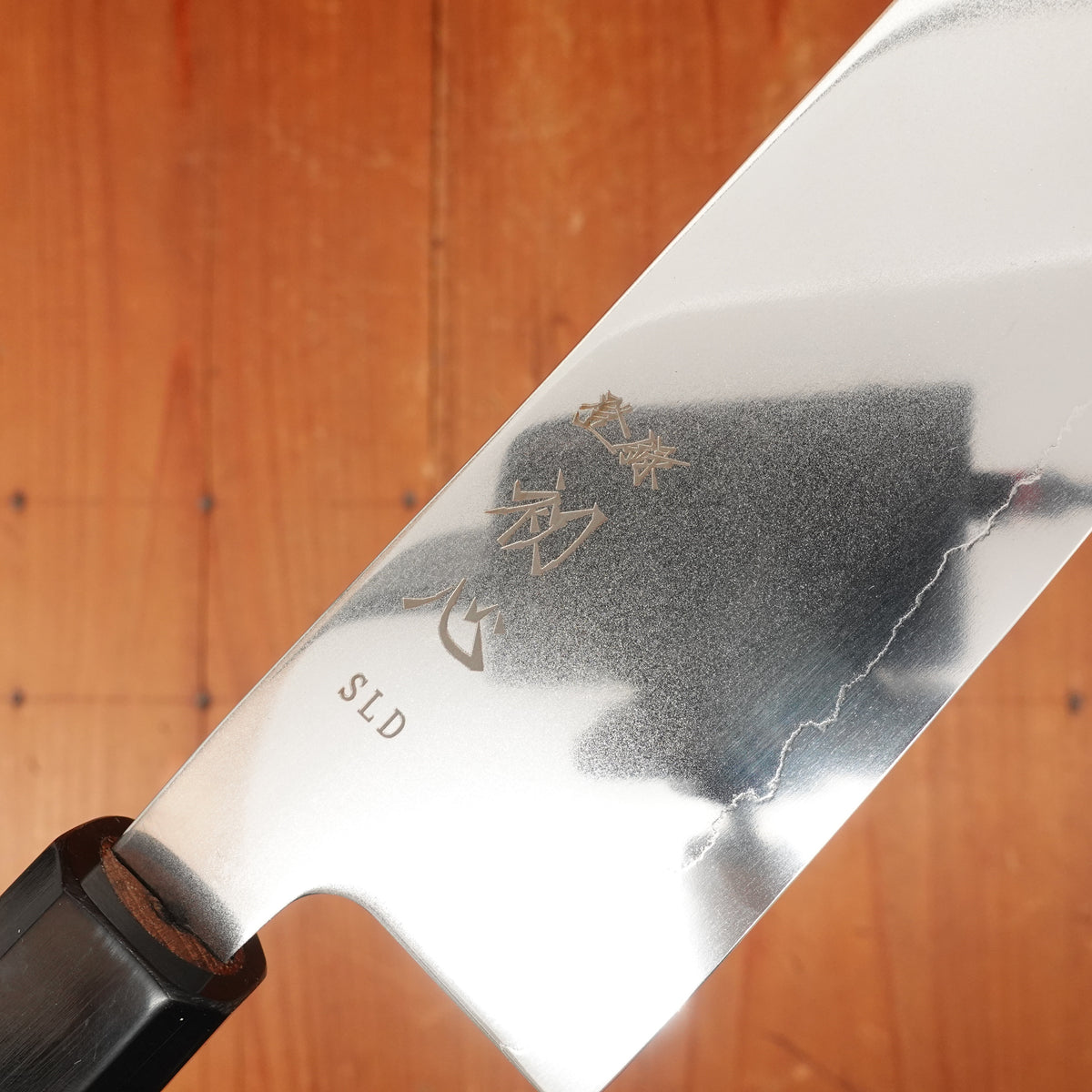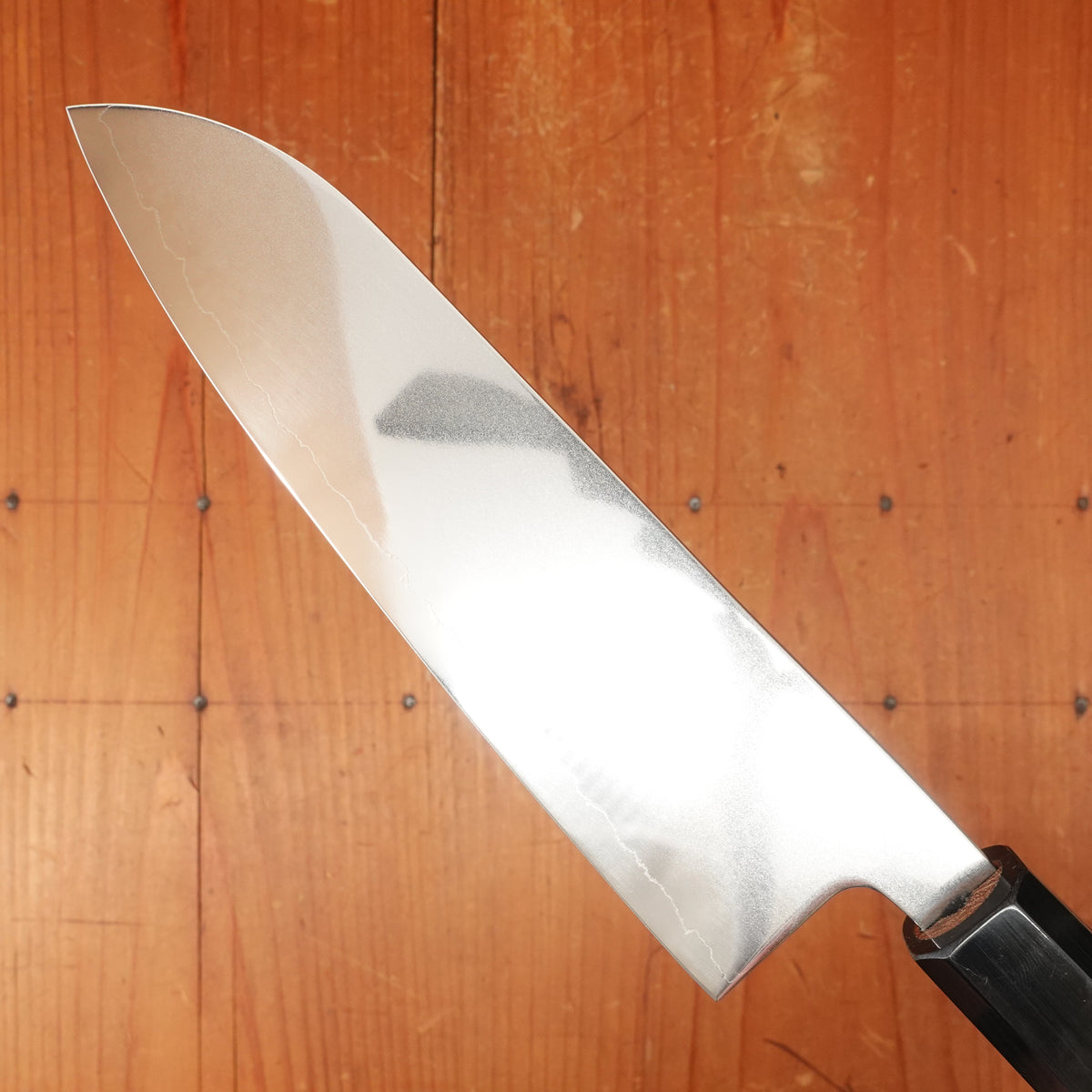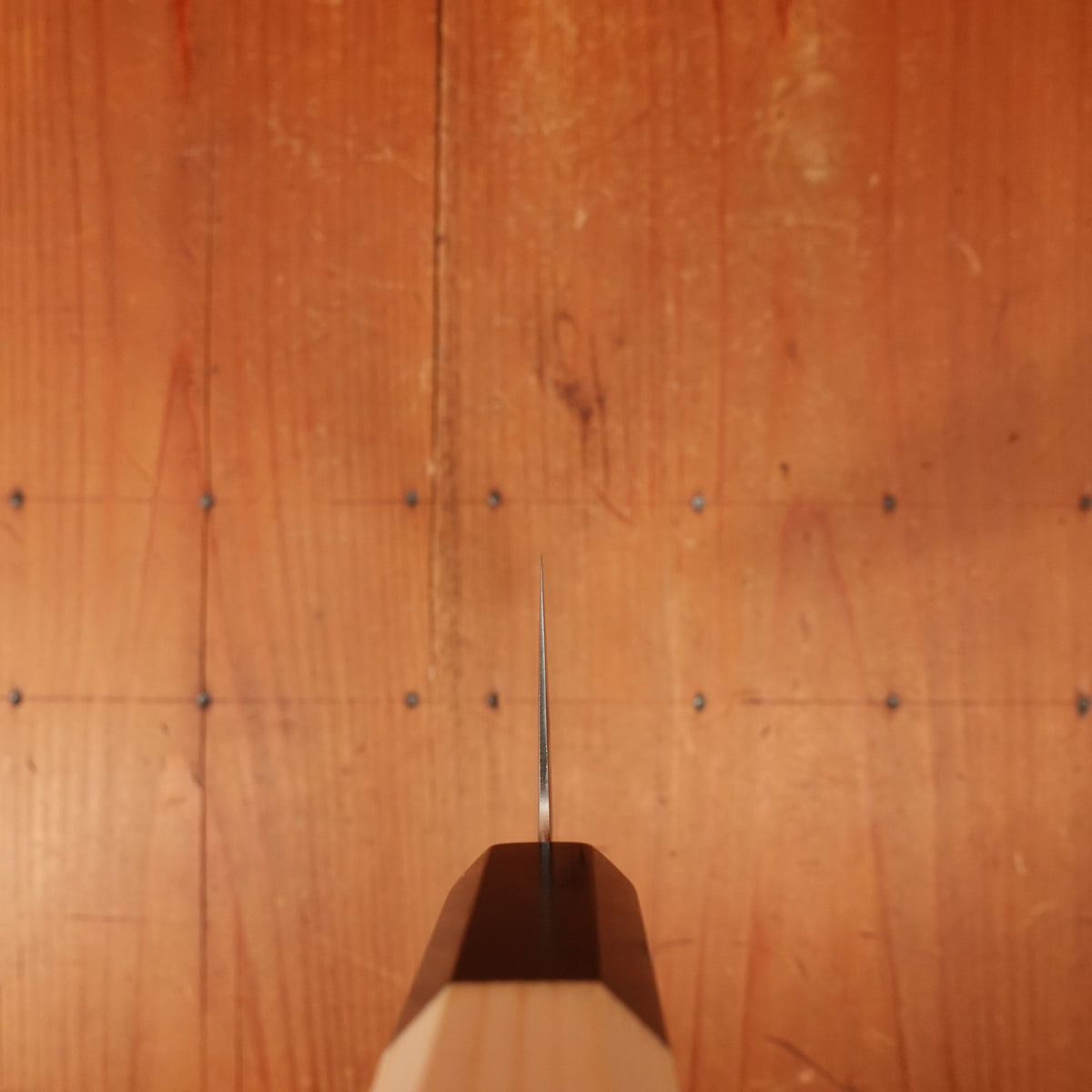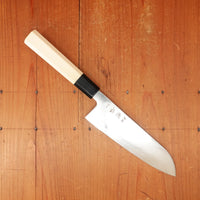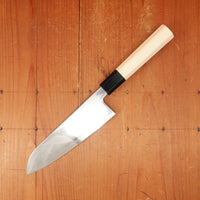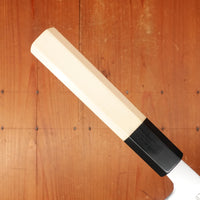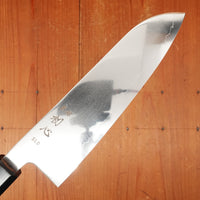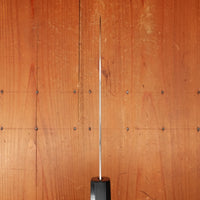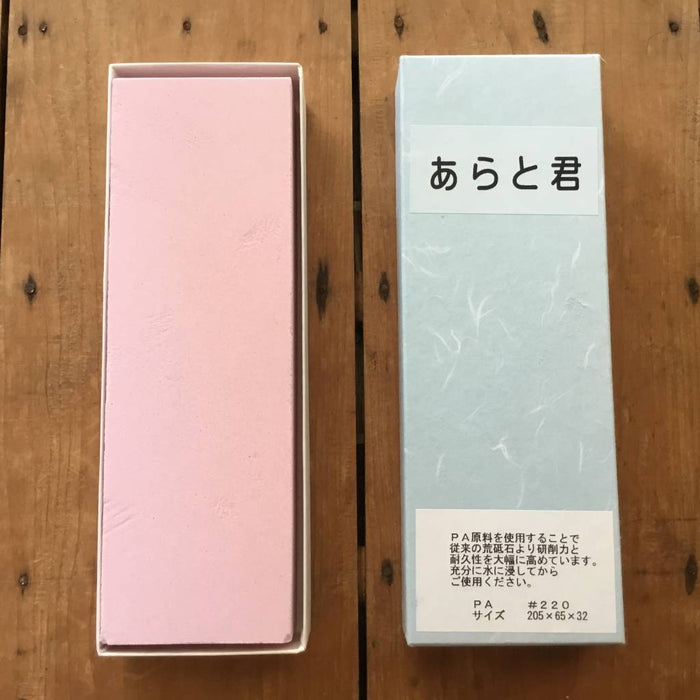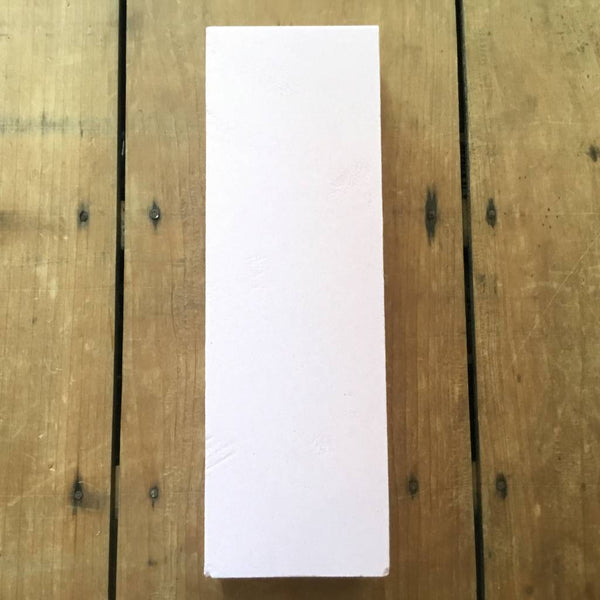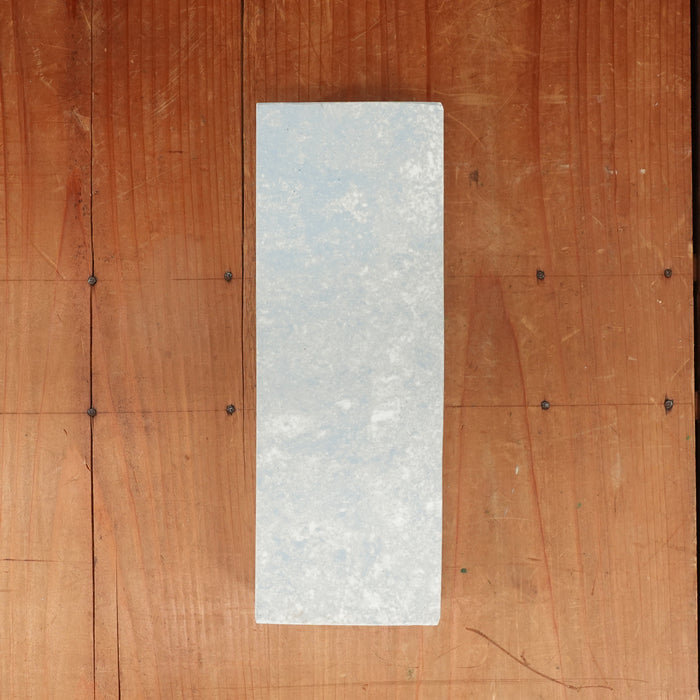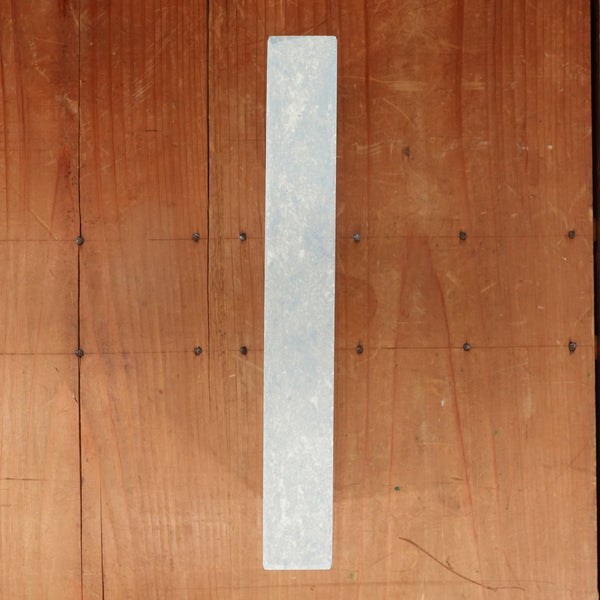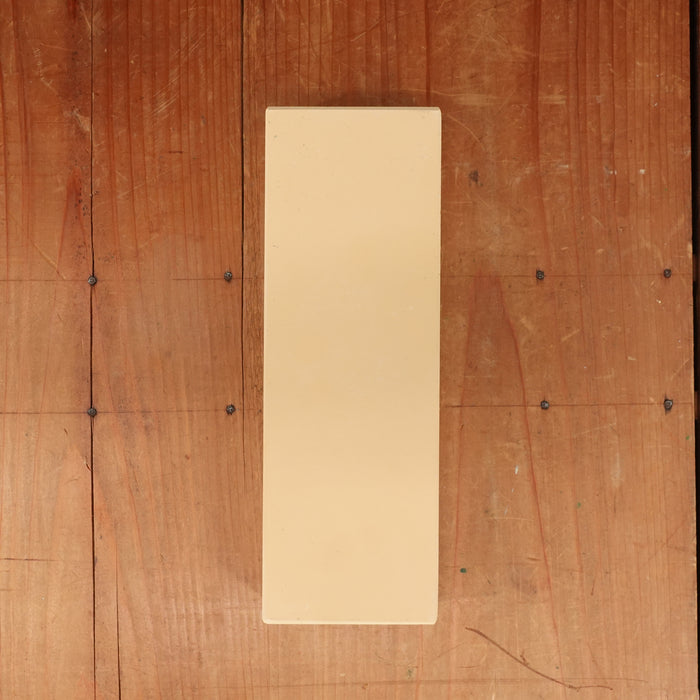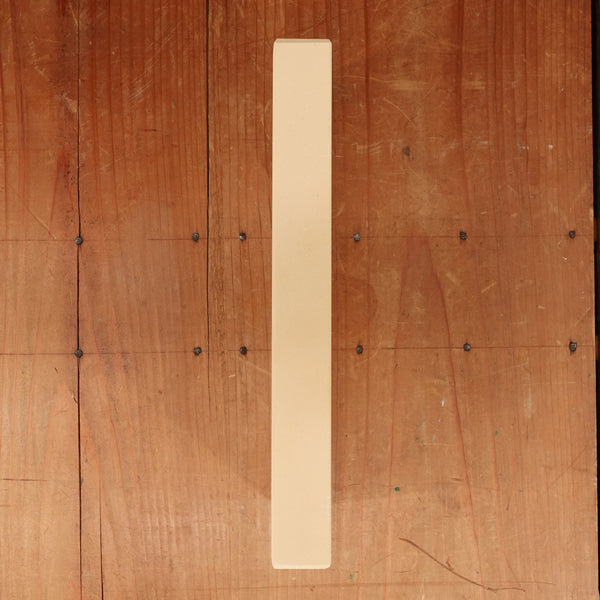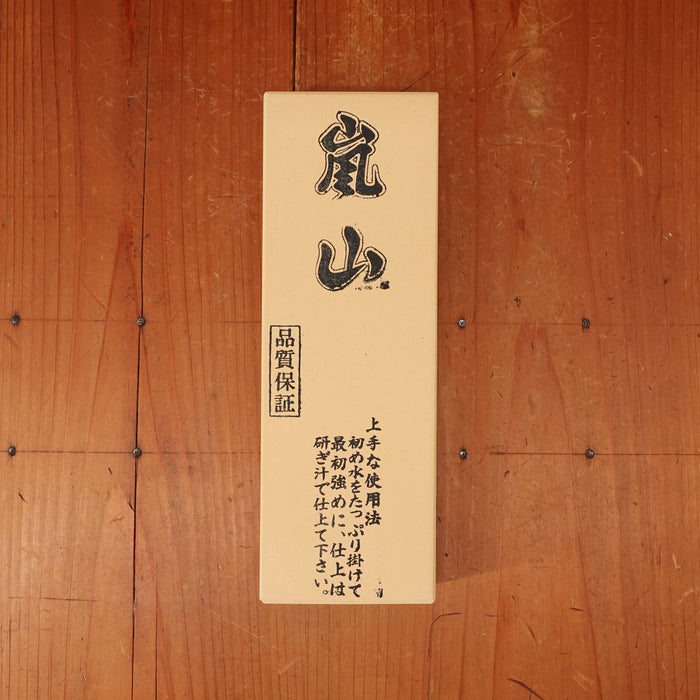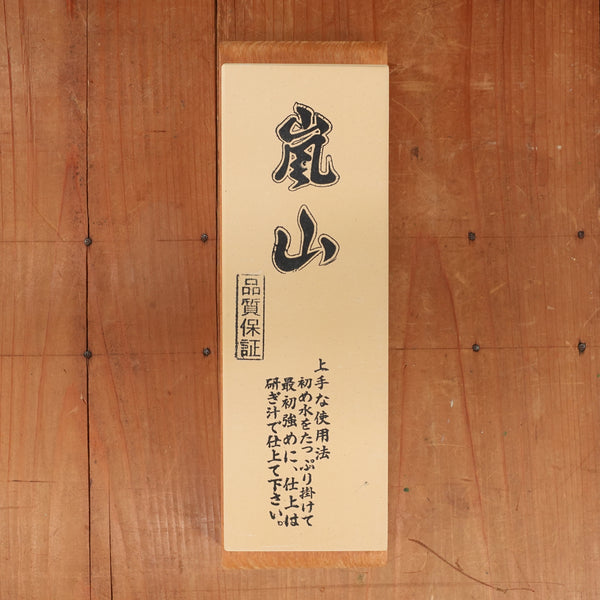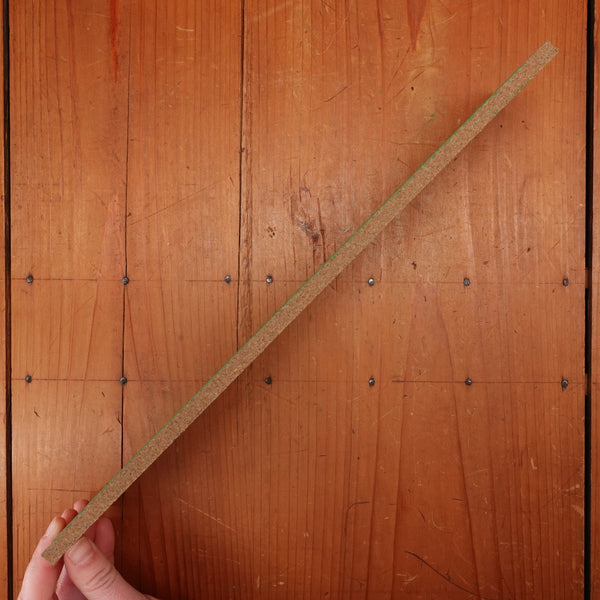Hatsukokoro Hikari 170mm Santoku Stainless Clad SLD Hinoki Handle
-
Regular Price
-
$145.00
-
Sale Price
-
$145.00
-
Regular Price
-
Sold Out
-
Unit Price
- per
- Regular Price
- $145.00
- Sale Price
- $145.00
- Regular Price
- Unit Price
- per
Thin convex ground stainless clad SLD "semi-stainless" steel with imitation buffalo horn (plastic) ferruled hinoki wood handles. These stock removal san mai knives are a great value cutting smoothly and holding a long edge.
SLD steel is a nearly stainless carbon steel at approx 11-12% chromium content (13% chromium in an alloy becomes stainless) SLD is sometimes referred to as 'semi stainless' as it rusts very slowly and has little to none reactivity with flavors.
The core of this knife is 'semi-stainless' and has a certain degree of rust resistance, but as it is not completely stainless, it should be dried immediately after use. The core will develop a patina with use, but any rough feeling orange rust should be removed with a light abrasive.
Please note that the solid hinoki wood handles can develop cracks with soaking.



Listed Length: 170mm
Total Length: 311mm
Edge Length: 172mm
Heel Height: 46mm
Spine Thickness: 1.9mm
Weight:
Orientation: Ambidextrous
Blade Type: Stainless Clad Semi-Stainless Steel
Steel Type: SLD
Steel Hardness (HRC): 64
Maintenance: Some Attention
Handle Type: Japanese (wa)
Handle Material: Hinoki & Horn Ferrule
Dive Deeper
Medium-Fine finish - Japanese
Sharpening Supplies
Stones & Accessories selected specifically for this knife.
Arato-kun #220 Extra Coarse Grit Whetstone
- Regular Price
- $34.00
- Sale Price
- $34.00
- Regular Price
-
- Unit Price
- per
Bernal Cutlery Takarazukushi 1200 Grit Blue Marble Semi-Soft Ceramic Japanese Whetstone
- Regular Price
- $74.00
- Sale Price
- $74.00
- Regular Price
-
- Unit Price
- per
Bernal Cutlery Takarazukushi 4000 Grit Yellow Semi-Hard Resinoid Japanese Whetstone
- Regular Price
- $82.00
- Sale Price
- $82.00
- Regular Price
-
- Unit Price
- per
Arashiyama #6000 Whetstone Stone NO Wooden Base
- Regular Price
- $58.00
- Sale Price
- $58.00
- Regular Price
-
- Unit Price
- per
Arashiyama #6000 Whetstone With Nagura Stone and Wooden Base
- Regular Price
- $62.00
- Sale Price
- $62.00
- Regular Price
-
- Unit Price
- per
Bernal Cutlery Monodiachrome™ Precharged Deburring Strop
- Regular Price
- $40.00
- Sale Price
- $40.00
- Regular Price
-
- Unit Price
- per
SLD

